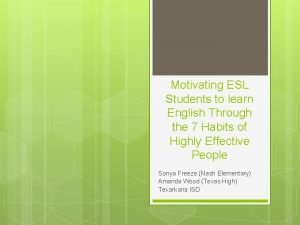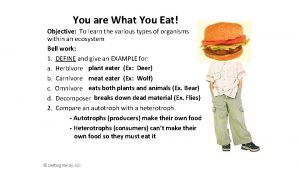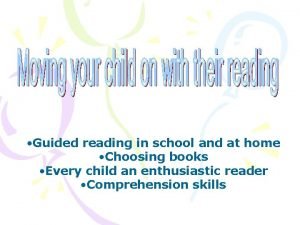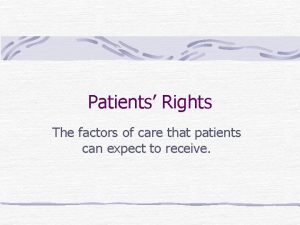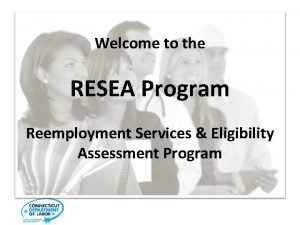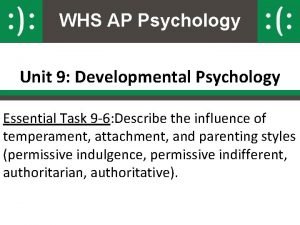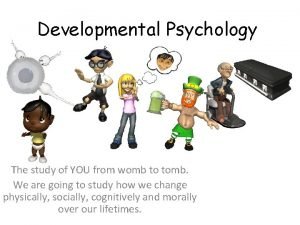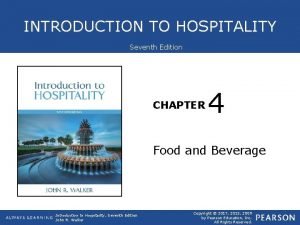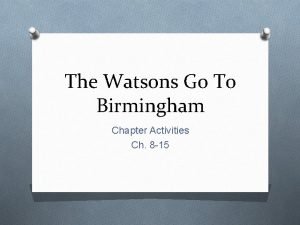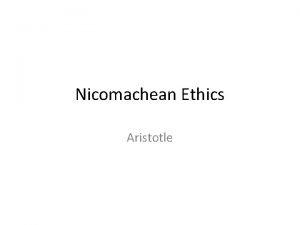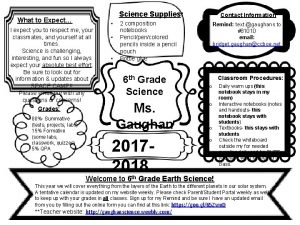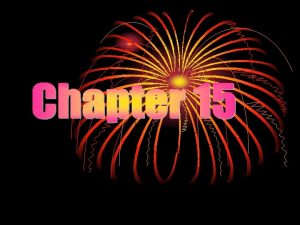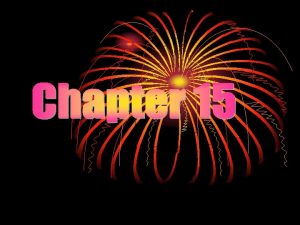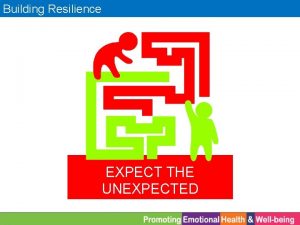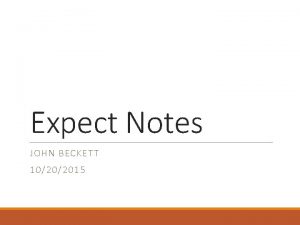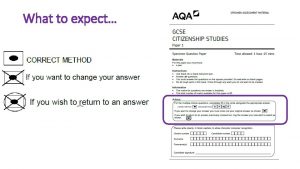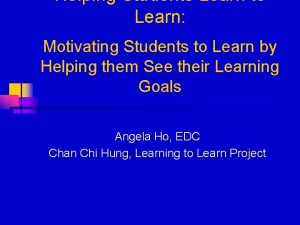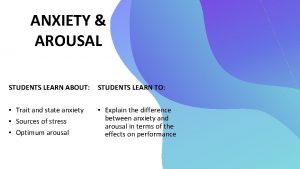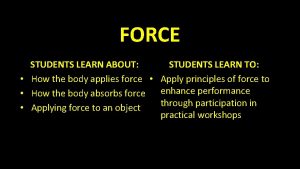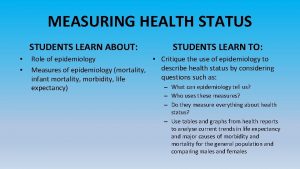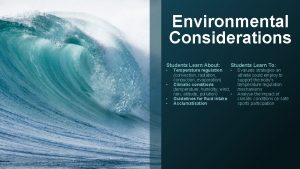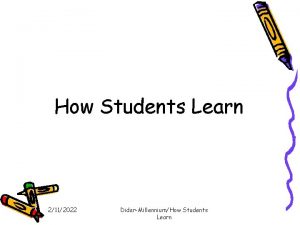Reading What do you expect students to learn






















- Slides: 22












Reading What do you expect students to learn through reading? What do you do to achieve these goals?

Reading Models �Top-down �Bottom-up �Interactive

What is the skill of reading? �Reading involves bottom-up and top-down processes. �Bottom-up processes help comprehension through Ø◦ decoding (word-level) Ø◦ focusing on vocabulary or grammar �Top-down processes help comprehension through Ø◦ using prior content knowledge Ø◦ using knowledge of the genre (textual schemata) Ø◦ using knowledge of language

Reading activities Pre-reading: A task that helps learners tune into a text before reading it, which aids their understanding Words and pictures Word association Listen and speak

Reading activities Skimming: read to look for main ideas in a passage. …we just need to get the general idea of the paragraph. Anderson, N. J. (2014). Active skills for reading, student book 4 (3 rd ed. ). Unit 4, Chapter 1, p. 66. Independence, KY: Cengage Learning. Activity: Choose the best title (Task) For While-reading

Reading activities Scanning: read quickly and pause only to find the particular information Anderson, N. J. (2014). Active skills for reading, student book 4 (3 rd ed. ). Unit 4, Chapter 2, p. 86. Independence, KY: Cengage Learning. Activity: Teacher, you’re wrong! Shout ‘teacher you’re wrong’ when you hear your teacher make a mistake. Teacher can use a list to check individuals’ participation. For While-reading

Reading activities Intensive reading: read for details Activity: color the text student-generated questions While-reading : Activities that motivate learners to read a text

Reading activities Post-reading : Activities that encourages learners to use information they gained from reading a text Activity: Comprehension question review Cartoon strip Running dictation Board games

Tips for Teaching Reading Strategies -1 Systematically plan strategies into instruction. Model new strategies and “think aloud” as you use them. Make connections between new strategies and what the children already know. Apply strategies to different genres, across different subject areas. Start with one or two strategies, then gradually build your repertoire. Use the correct terms for strategies, even with emerging readers.

Tips for Teaching Reading Strategies -2 Provide extended chunks of time each day for independent practice. Keep strategy groups flexible. Use a variety of grouping formats, including whole- and small-group instruction. Use complete, authentic pieces of text for modeling and independent practice. Keep records of individual student’s strategy use. Provide opportunities for students to reread familiar texts to build fluency and automaticity. Integrate strategies throughout instruction, across the day. Adopted from Bette S. Bergeron and Melody Bradbury-Wolff, 2002, Teaching Reading Strategies in the Primary Grades

References Bette S. Bergeron & Melody Bradbury-Wolff(2002). Teaching Reading Strategies in the Primary Grades, Scholastic. Brown, H. D. (2004), Language Assessment: Principles and Classroom Practices. Brown, H. D. (2007). Teaching by Principle. NY: Pearson Education. Brown, H. D. & Abeywickrama, P. (2010). Language Assessment: Principles and Classroom Practices, 2 nd Ed. White Plains, NY: Pearson Education, Inc. White Plains, NY: Longman. Cohen, A. D. (1994). Assessing Language Ability in the Classroom, 2 nd Ed. Boston, MA: Heinle & Heinle. Raimes, A. (1983). Techniques in Teaching Writing. Oxford University Press. Van. Patten, B. (2005). Processing instruction. Mind & Context in Adult Second Language Acquisition. Georgetown University Press. 267 -281. Willis, J. (1996). A Framework for Task-Based Learning. Longman. http: //www. teachingenglish. org. uk/article/teens-readingskills? utm_source=facebook&utm_medium=social&utm_campaign=bcteachingenglish http: //www. teachingenglish. org. uk/sites/teacheng/files/B 127 c%20 A 1%20 TE%20 Staff %20 Room%20 Posters%204. pdf
 What do you expect to learn
What do you expect to learn Pre reading while reading and post reading activities
Pre reading while reading and post reading activities Tactile learner definition
Tactile learner definition What do you expect
What do you expect Motivating students to learn english
Motivating students to learn english The more you study the more you learn
The more you study the more you learn Man lernt solange man lebt
Man lernt solange man lebt What is a herbivore
What is a herbivore Rizal carved the image of the blessed virgin mary on a
Rizal carved the image of the blessed virgin mary on a How to develop reading skills in students
How to develop reading skills in students Types of reading skill
Types of reading skill Grading system for shs work immersion
Grading system for shs work immersion Expect verb pattern
Expect verb pattern The factors of care that patient can expect
The factors of care that patient can expect What to expect at resea appointment
What to expect at resea appointment Ap psychology unit 9
Ap psychology unit 9 Never expect the unexpected
Never expect the unexpected Parents impose rules and expect obedience
Parents impose rules and expect obedience Womb to tomb psychology
Womb to tomb psychology Introduction to hospitality 7th edition
Introduction to hospitality 7th edition Alone together book review
Alone together book review The watsons go to birmingham chapter 8
The watsons go to birmingham chapter 8 Dont expect more
Dont expect more




